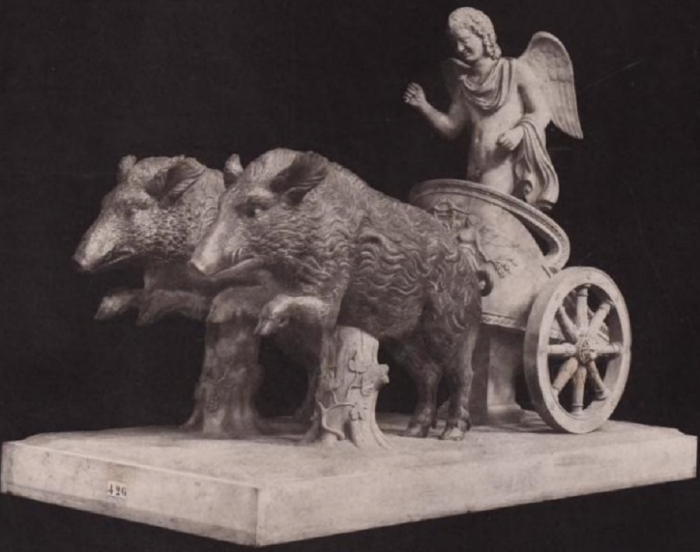
One of the most important collections in the world of classical sculpture will exhibit its artworks after decades, after the "historical" deal between the Italian government and the aristocratic family Torlonia...
The collection, which includes more than 600 Greek and Roman statues, is stored in some of the many Torlonia family's palaces in Rome. It includes 20 Hercules' statues, almost 30 Venus' statues and 100 statues of Caesars and their families. It also includes mythical gods' sculptures as well as many Roman copies of Greek statues.


Amazing sculpture illustrating Ulysses' escape from Cyclops cave.
Torlonia family and the Italian government agreed to exhibit around 600 Greek and Roman statues. The first step was to sign a deal between a member of Torlonia family and Italy's Minister of Culture, Dario Franceschini. 60-90 artworks will be presented in an exhibition curated by art historian Salvatore Settis. The exhibition will take place in 2017.

The collection contains many statues of Hercules and representations from mythology.
Alessandro Poma Murialdo, a member of Torlonia family, stated that the exhibition will travel the whole world. It is a part of the agreement. It will travel in Italy, America and Europe.

The Greek god of love, Eros, on a chariot pulled by boars.
It is understood that the collection will be exhibited in a Rome's museum. However Poma Murialdo stated that his family and the ministry haven't decided the final destination yet.

Fanciulla Torlonia, a rare sculpture from the Etruscan civilisation (8th to 3rd century BC) found in Vulci, near Rome
Settis emphasised the value of the collection to the study of classic art and said he was pleased the family’s foundation had agreed to pay to restore the pieces, which will remain under their ownership.

Hestia Giustiniani is a Roman copy of a 5th century BC sculpture attributed to Greek master Kalamis
The collection was started by Giovanni Torlonia in 1810 with works that were largely unearthed on the family’s estates, including about 50 pieces found around what is now the Leonardo da Vinci or Fiumicino airport.
The collection was reportedly shuttered from public view in the 1960s after the family decided to convert the exhibition building into a block of flats, causing an outcry among experts who, in the late 70s, called for the marbles to be confiscated by the Italian state.
Related:
- Greco-Buddhism: All You Need To Know
- Ancient Greeks discovered America, according to an Italian university professor
- This Mysterious 2,100-Year-Old Mechanism Is the World’s First Computer
- Unbelievable inventions by ancient Greeks that remained unexplained until the 20th century
- 10 Famous Greek Words You Use Everyday
- The 10 Most Famous Personalities Of The Last 6,000 Years
- Top 14 Greatest Philosophers And Their Books
- DNA Reveals Origin of Crete’s Ancient Minoan People
- 30 Precious Life Lessons By 10 Ancient Greek Philosophers
- The Key To Happiness, According To 3 Greek Philosophers
- How To Build A Fake Ancient City In Just 5 Years
- The Recognition Of The Genocides As The Beginning Of Justice Against The Crimes Against Humanity












COMMENTS